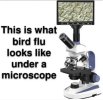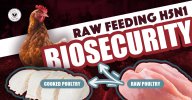I know this was discussed earlier this year, but it’s come up in the news again so was wondering if I should be concerned about the raw food my cat eats.
She eats a frozen chicken preparation made by a local (San Francisco) pet store. And a local raw frozen turkey product from another company.

 www.jeffreyspets.com
www.jeffreyspets.com
Thoughts?
Thanks.
Pam
She eats a frozen chicken preparation made by a local (San Francisco) pet store. And a local raw frozen turkey product from another company.

Jeffrey's Chicken and Veggies Recipe for Cats — Jeffrey's Natural Pet Foods
Fresh Cat Food and Treats Made in San Francisco - Voted Best Pet Food Store and Best Pet Food Delivery in the Bay!
Thoughts?
Thanks.
Pam







